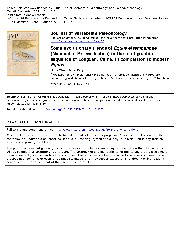摘要
The investigation of the evolution and speciation of Equus in Eurasia is, despite the abundance of available material, often hampered by a lack of stratigraphic information. Here we present the results of our study of material belonging to Equus eisenmannae excavated from sequential 'lower' and 'upper' levels of the loess section at Longdan, China, which has been dated to ca. 2.55-1.85 Ma (early Nihewanian age). The morphological differences between fossils found in the 'upper level' and those from the 'lower level' were quantified using univariate and multivariate analyses. Quantitative variation among modern Equus is discussed in order to address issues of potential speciation events and evolutionary trends seen in the fossil material. We also discuss the evolutionary level of E. eisenmannae by comparing our sample with E. sanmeniensis. Results show that quantitative differences between fossils of E. eisenmannae from the different levels at Longdan approximate and do not exceed intraspecific variation among modern species of Equus, although the variation is smaller than in the extant species E. hemionus. Thus, no sufficient evidence of speciation within the two sequential levels could be found. However, some common evolutionary trends of modern Equus are evident in E. eisenmannae, even though E. eisenmannae is not considered the immediate ancestor of modern Equus.
- 出版日期2011
- 单位中国科学院古脊椎动物与古人类研究所
